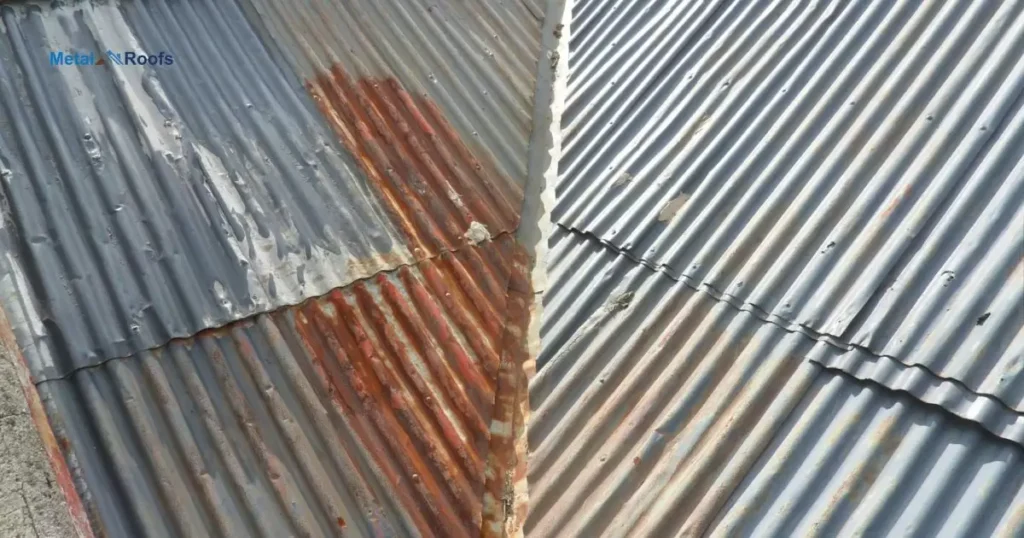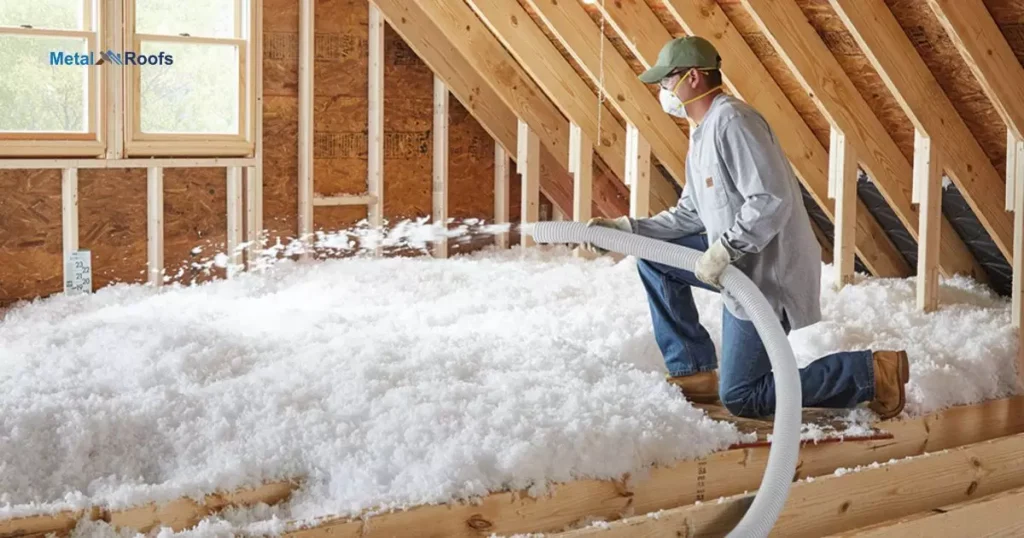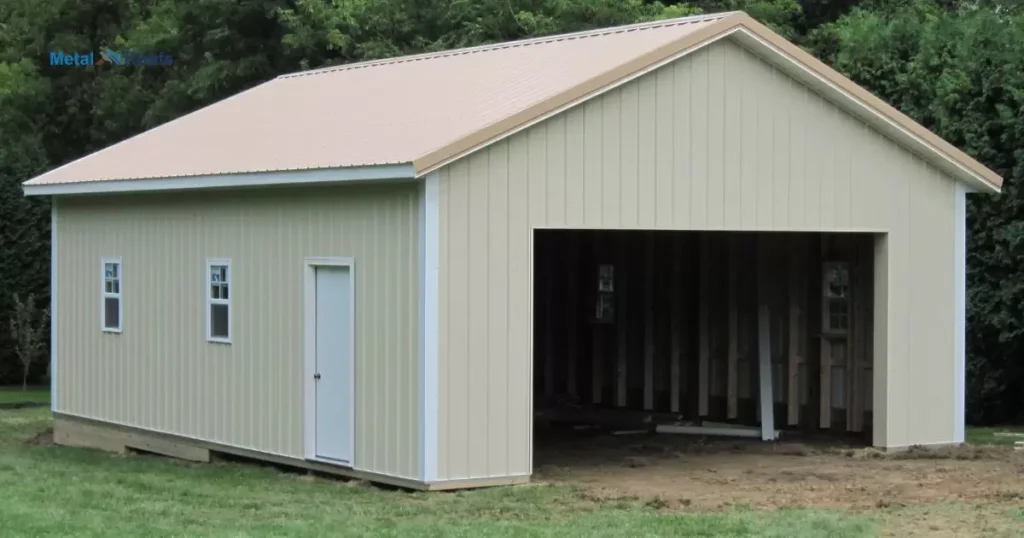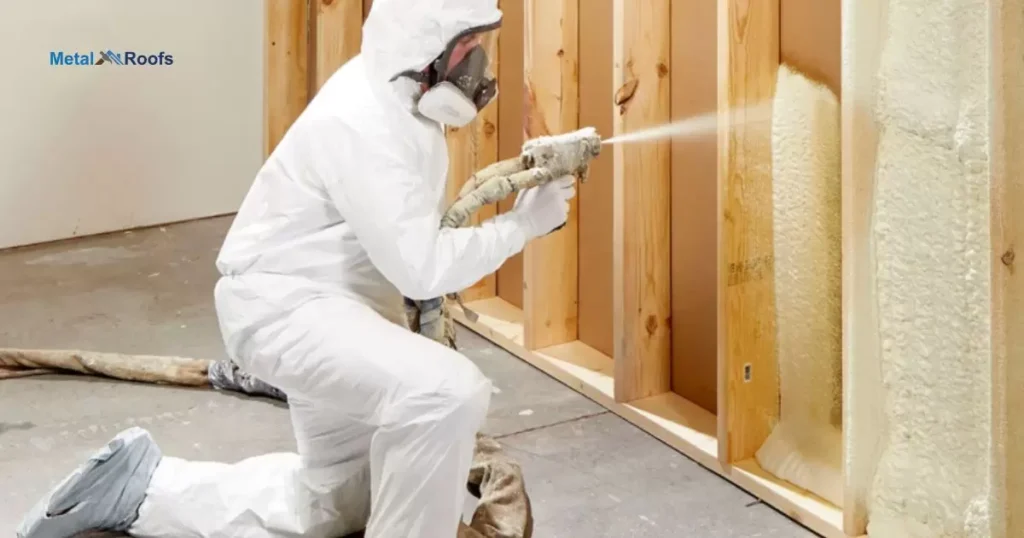To insulate a steel building, use metal insulation. It helps regulate temperature, preventing heat loss in winter and keeping cool air in summer. Metal insulation also reduces noise and increases energy efficiency, making the building more comfortable and cost-effective to maintain.
Wondering how to insulate a steel building effectively? Metal insulation is the key. It helps regulate temperature, reduces noise, and boosts energy efficiency. Discover the benefits of metal insulation for a comfortable and cost-effective building solution.
Metal insulation is crucial for insulating steel buildings. It acts as a barrier, regulating temperature fluctuations and improving energy efficiency. By reducing heat loss in winter and keeping cool air in summer, metal insulation creates a comfortable and sustainable indoor environment.
Key Takeaways
- Importance of proper insulation for energy efficiency and comfort.
- Techniques like using foam boards or spray foam for effective insulation.
- Consideration of factors like climate, budget, and local building codes.
- Benefits such as reduced energy costs, improved durability, and compliance with regulations.
Reasons for Insulating a Steel Building
| Reason | Description |
| Temperature Control | Maintains consistent indoor temperatures, reducing heat loss in winter and cooling costs in summer. |
| Energy Efficiency | Reduces energy consumption for heating and cooling, leading to long-term cost savings. |
| Noise Reduction | Minimizes noise transmission, creating a quieter and more comfortable indoor environment. |
| Comfort | Ensures a comfortable indoor space throughout the year, enhancing occupant satisfaction. |
| Moisture Protection | Prevents issues like mold, mildew, rust, and corrosion by regulating moisture levels. |
| Structural Preservation | Preserves the structural integrity of steel components, increasing the building’s longevity. |
| Regulatory Compliance | Meets building codes and standards, ensuring energy efficiency and safety requirements are met. |
Insulating a steel building is crucial for temperature regulation and energy efficiency. It prevents heat loss in winter and keeps cool air inside during summer.
Insulation reduces noise and improves comfort in a steel building. It also saves energy and promotes sustainability. When installing screws on a metal roof, follow manufacturer guidelines and local building codes for proper spacing.
Preventing Mold, Mildew, Rust, and Corrosion

Insulating a steel building plays a vital role in preventing issues like mold, mildew, rust, and corrosion. By regulating moisture levels and maintaining stable temperatures, insulation helps create a dry and protected environment.
Foam board insulation is crucial for protecting steel components and extending a building’s lifespan. By attaching it to a metal roof, using the appropriate methods, we enhance thermal efficiency and safeguard against damage and costly repairs.
Insulation Procedures for Steel Buildings
Insulating a steel building involves several key procedures to ensure optimal performance and efficiency. First, assess insulation needs based on climate and building usage.
Next, choose the right insulation material, such as foam boards or spray foam, considering factors like R-value and moisture resistance. Proper installation is crucial, sealing gaps and ensuring a continuous thermal barrier.
Regular maintenance, including inspections for damage or moisture intrusion, helps uphold insulation effectiveness over time. Following these procedures diligently results in a well-insulated steel building with improved energy efficiency and comfort.
Types of Steel Building Insulation
Steel building insulation is essential for maintaining comfort and energy efficiency. Metal insulation regulates temperature and reduces noise effectively. It’s a practical choice for long-term sustainability and cost savings.
Reflective Foil
Reflective foil is a type of steel building insulation that reflects heat. It helps maintain a consistent temperature indoors, reducing energy costs. This insulation type is easy to install and offers excellent thermal performance.
Fiberglass
Fiberglass insulation is another option for steel buildings. It provides thermal regulation and noise reduction benefits. This type of insulation is cost-effective and widely used in construction for its effectiveness.
Insulated Panels
Insulated panels are a popular choice for steel building insulation. They offer easy installation and excellent thermal performance. With insulated panels, you can achieve efficient temperature regulation and noise reduction.
Rigid Board
One type of steel building insulation is rigid board. It’s a sturdy option that provides excellent thermal resistance. Rigid board insulation helps maintain a comfortable indoor environment and enhances energy efficiency.
Considerations for Choosing Insulation Materials

When choosing insulation materials for a steel building, consider factors like effectiveness, durability, and cost. Metal insulation stands out for its ability to regulate temperature and reduce energy consumption. It’s a practical choice that ensures long-term comfort and savings.
Building Shape and Size
Consider the shape and size of your building when choosing insulation materials. Larger buildings may require thicker insulation for better efficiency. The shape can also affect airflow and insulation effectiveness.
Geographic Location
Climate variations affect insulation needs; for instance, hot climates require heat-resistant materials. Understanding your region’s weather patterns helps select the most suitable insulation for optimal performance and energy efficiency.
Intended Use of the Building
Different purposes, like offices or warehouses, may require varying insulation levels. Understanding the building’s function helps in selecting the most suitable insulation for optimal performance.
Importance of Steel Building Insulation
Steel building insulation is crucial for maintaining comfortable indoor temperatures. It helps regulate heat in both summer and winter, ensuring a pleasant environment year-round.
Proper insulation reduces energy costs by minimizing heat loss and improving energy efficiency. This makes steel building insulation an essential investment for long-term savings and sustainability.
Understanding U-Values, R-Values, and Vapor Retarders
U-Values measure heat transfer. R-Values gauge resistance to heat flow. Vapor retarders prevent moisture buildup. Understanding these values is crucial for effective building insulation.
U-Value
The U-Value measures heat transfer. Lower U-Values indicate better insulation. Understanding U-Values is essential for effective building insulation.
R-Value
The R-Value measures heat resistance. Higher values mean better insulation. Understanding R-Values is crucial for effective building insulation.
Vapor Retarder
A vapor retarder prevents moisture buildup in insulation. It helps maintain the effectiveness of U-Values and R-Values. Understanding vapor retarders is essential for comprehensive building insulation.
Insulation Methods for Steel Sheds and Garages

Insulating steel sheds and garages is crucial for maintaining comfortable interior temperatures, reducing energy expenses, and safeguarding stored items from extreme weather conditions. Here are various methods commonly employed for insulating steel sheds and garages:
Fiberglass Insulation: This is a widely used and cost-efficient insulation material available in batts or rolls. It’s easy to install between the steel framing of sheds or garages and comes in different R-values, offering varying levels of thermal resistance.
Foam Board Insulation: Lightweight foam boards like expanded polystyrene (EPS) or extruded polystyrene (XPS) provide good thermal insulation. They can be cut to fit between steel framing members and offer relatively easy installation, along with moisture resistance.
Spray Foam Insulation: Applied as a liquid that expands and solidifies into foam, spray foam insulation creates an airtight seal, preventing air leaks and enhancing energy efficiency. It’s suitable for application on interior walls and ceilings of steel sheds and garages.
Reflective Foil Insulation: This type of insulation, also known as radiant barrier insulation, reflects radiant heat away from the interior. It typically consists of a reflective foil layer between foam or fiberglass, offering effectiveness in hot climates or areas with intense sunlight.
Bubble Wrap Insulation: Consisting of bubble wrap layers between reflective foil, this insulation type traps air within bubbles, providing some thermal insulation. While not as effective as other methods, it can be a cost-effective option for mild climates.
Insulated Panels: Some manufacturers offer insulated panels with insulation material already sandwiched between steel layers. These panels are convenient and provide high insulation levels without requiring additional installation steps.
Consider climate, budget, ease of installation, and desired insulation level when selecting an insulation method for your steel shed or garage. Adhere to manufacturer guidelines and local building codes during installation to ensure safety and effectiveness.
Benefits of Insulating a Steel Building
Insulating a steel building offers several key benefits:
- Reduces heating and cooling costs.
- Maintains consistent indoor temperatures.
- Prevents moisture buildup and related damage.
- Reduces noise transmission.
- Protects against corrosion and rust.
- Lowers carbon emissions.
- Meets building code requirements.
- Increases market appeal and value.
What Is The Best Way To Insulate An Existing Metal Building?

The best way to go about it depends on what you need, but you have choices like shiny foil, fluffy fiberglass blankets, special panels made for metal buildings, or solid boards that keep things warm or cool.
Frequently Asked Questions
How do you cool down a steel building?
You can cool down a steel building by installing insulation to reduce heat transfer and using ventilation systems like fans or air conditioning units.
How do you insulate a steel clad building?
To insulate a steel-clad building, you can use methods like applying spray foam insulation directly to the interior surfaces or installing fiberglass batts between the steel framing.
How do I stop my metal building from sweating?
To prevent sweating in your metal building, ensure proper insulation and ventilation to control moisture levels and minimize condensation.
Conclusion
Metal insulation is a practical solution for steel building insulation needs. It effectively regulates temperature, improves energy efficiency, and reduces noise. With its benefits in comfort and cost savings, metal insulation stands out as a reliable choice.
In conclusion, choosing metal insulation for your steel building offers long-term advantages. It creates a comfortable indoor environment year-round and helps save on energy costs. Embracing metal insulation ensures a sustainable and efficient building for years to come.











